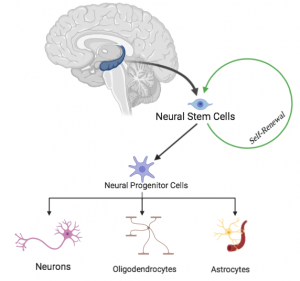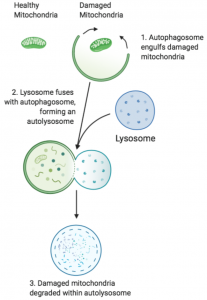55 5.1: Introduction
Electronic Cigarettes

Electronic cigarettes (e-cigarettes), also known as electronic nicotine delivery systems (ENDS) or more colloquially as “vapes”, were first introduced in 2003 (Schraufnagel et al.). These devices work by heating a solvent, known as an “e-liquid”, to produce a vapour which is inhaled by the user. Although initially marketed as a “healthier” smoking cessation aid (Rom et al.), electronic cigarettes confer detrimental health effects, which are only beginning to be investigated (“Vaping-associated lung illness”; CDC).
E-liquid
A solvent composed primarily of propylene glycol and vegetable glycerin that is heated during use of an e-cigarette. These viscous liquids can also contain one of 7000 flavourings and/or varying concentrations of nicotine (Madison et al.).
Vaping Destroys Lungs of 17-year old Boy
Although the story of a 17-year-old athlete requiring a bilateral lung transplant due to vaping seems extreme, it is sadly not an anomaly. The Centers for Disease Control and Prevention (CDC) in the United States has implicated electronic cigarette use in 2,291 cases of pulmonary illness and 48 deaths as of December 3, 2019 (CDC). In Canada, Public Health has recorded 13 cases of pulmonary illness related to vaping as of December 3rd, 2019 (“Vaping-associated lung illness”). The CDC has established an official name for these cases: e-cigarette, or vaping, product use associated lung injury (EVALI).
EVALI
E-cigarette, or vaping, product use associated lung injury. Symptoms include (Kalininskiy et al.; Jatlaoui et al.):
- respiratory symptoms
- chest pain
- difficulty breathing (dyspnea)
- coughing
- gastrointestinal symptoms
- nausea
- vomiting (emesis)
- abdominal pain
- diarrhea
- fever
While it is clear that vaping causes adverse health effects, the causative chemicals and underlying cellular mechanisms remain unknown (“Vaping-associated lung illness”). Further, while e-cigarette use is known to harm the lungs, its effect on other organs of the body are relatively unexplored.
Neural Stem Cells
Health consequences of e-cigarette use may exist beyond the lungs (Zahedi et al., Obisesan et al.). For example, it has been shown that inhaled particles may travel through the olfactory route to the brain (Kozlovskaya et al.). This underscores the potential for chemicals within e-cigarette vapour to interact with cells in the brain (Zahedi et al.).
Of particular concern are the neural stem cells (Gage and Temple). Stem cells were shown to be more sensitive to cytotoxicity induced by e-liquid exposure than terminally differentiated cells (Bahl et al.). Even if the cells survive, their proliferation ability and differentiation potential can be reduced upon exposure to aerosols from e-cigarettes (Shaito et al.). Due to their life long persistence and proliferation, accumulation of damage within stem cells and their progeny is particularly consequential (Zahedi et al.).
Neural stem cells
Multipotent stem cells within the brain, specifically within the hippocampus and subventricular zone (Bond et al.). In general, stem cells are capable of self-renewal and the production of multiple different lineages of terminally differentiated cells.

The Role of Mitochondria
The deleterious effects of e-cigarette exposure may be mediated by an increase in intracellular reactive oxygen species (ROS) (Shaito et al.), particularly within mitochondria (Lerner et al.). These organelles are critical to both cell survival (through their role in ATP production, for example) and cell death. Their latter role is often provoked when cells experience stress, such as high intracellular calcium levels or elevated amounts of reactive oxygen species (ROS) (Vakifahmetoglu-Norberg et al.). In response, mitochondria may initiate apoptosis (Vakifahmetoglu-Norberg et al.). Due to this powerful role in determining cell fate, the functioning of mitochondria must be tightly regulated (Ding and Yin).

One method of mitochondrial quality control used by the cell is mitophagy (Ding and Yin). In this specialized form of autophagy, damaged mitochondria are engulfed by autophagosomes. These double membranes structures later fuse with lysosomes, which contain the enzymes and low pH necessary for degradation of the contents. For this reason, the acidity of lysosomes is critical to cell health (Zahedi et al.), as it facilitates the recycling of faulty mitochondria through mitophagy.
However, mitochondria have methods to evade this quality control, such as stress-induced mitochondrial hyper fusion (SIMH). In this process, mitochondria fuse together when exposed to certain stress-inducing stimuli (Tondera et al.; Shutt and McBride). The networked mitochondrial become too large to be engulfed by the autophagosome (Gomes et al.). This transient response is thought to be a survival technique which allows the cell to survive until the harmful stimulus is removed (Zahedi et al.). Other effects of SIMH include mtDNA exchange between mitochondria and a temporary increase in ATP production (Tondera et al.).
When exposed to aerosols from e-cigarettes, mitochondria experience elevated ROS (Lerner et al.), an effect that has been shown to lead to SIMH (Ballweg et al.; Bahl et al.). However, research regarding the effects of e-cigarette exposure on mitochondria is lacking.
In light of this, a recent study by Zahedi et al. exposed neural stem cells to both e-liquid and aerosols from e-cigarettes to investigate the currently elusive cellular mechanisms underlying e-cigarette induced pathology.
Main Research Questions Addressed by Zahedi et al. (2019)
The study by Zahedi et al. aimed to address two main questions:
- What are the effects of e-cigarettes on mitochondria within neural stem cells?
- Is nicotine responsible for the adverse effects of e-cigarette exposure?
